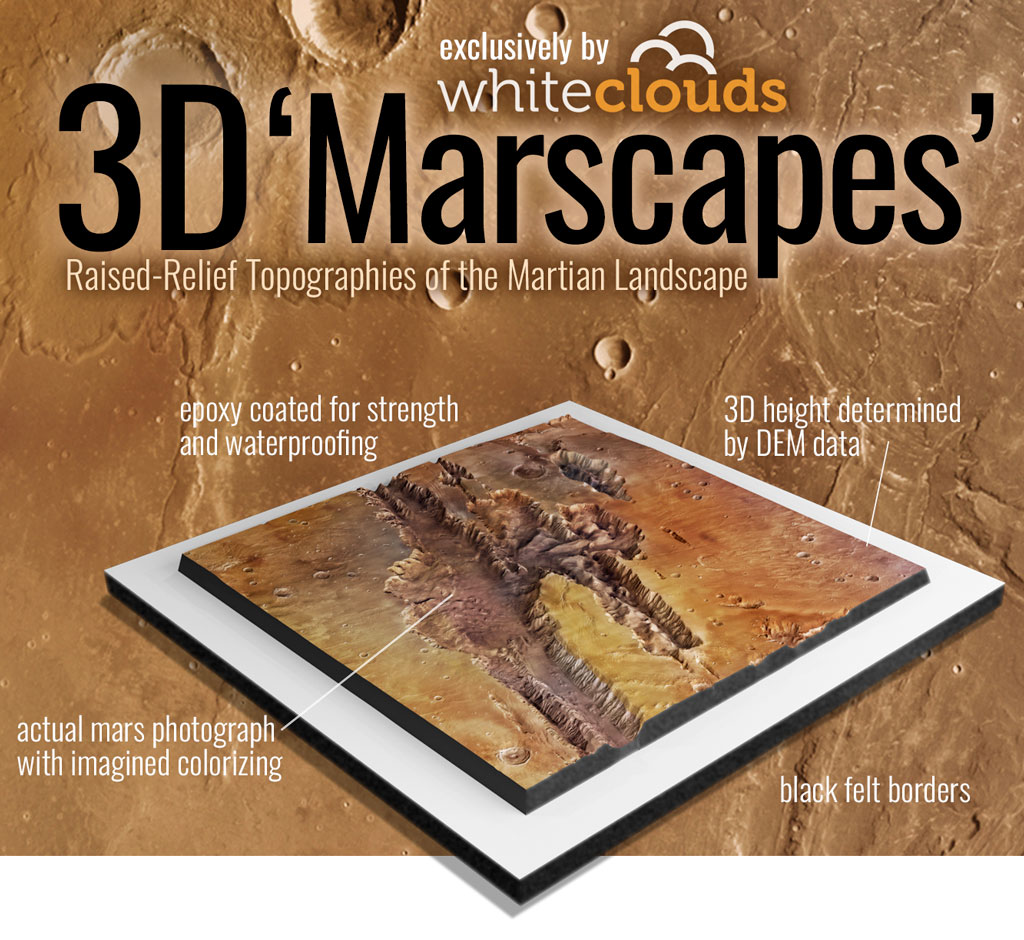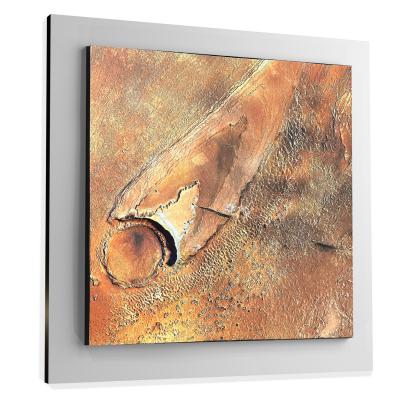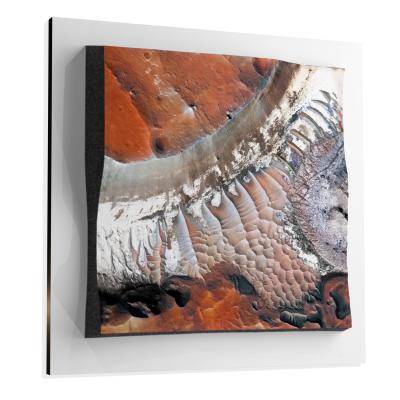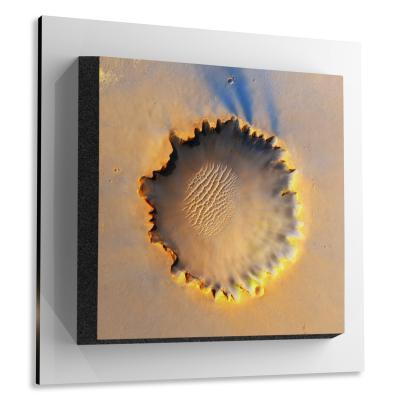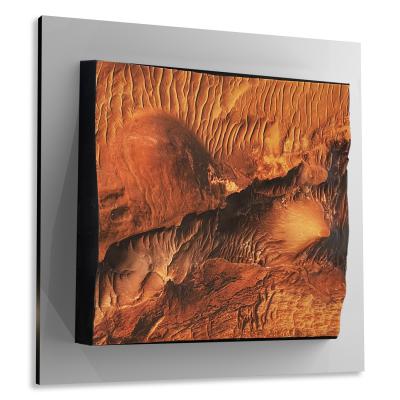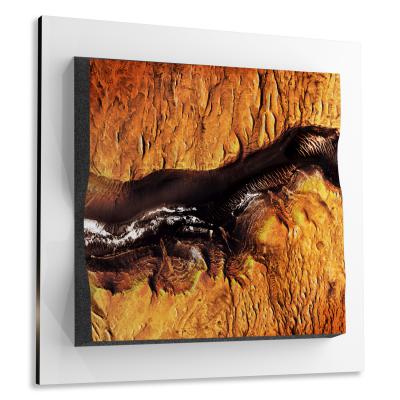Becquerel Crater
Becquerel Crater
We Build Custom 8K Mars Canvas Prints of Becquerel Crater
Did you know we make
custom
8K Mars Canvas Prints

and
3D Marscapes

Becquerel Crater
Becquerel Crater, named after the French physicist Antoine Henri Becquerel who discovered radioactivity, is an intriguing geological formation on the planet Mars. With its unique features and mineral deposits, Becquerel Crater has been a subject of intense study and exploration, providing valuable data that can deepen our understanding of Martian geology and perhaps the planet’s capacity to support life. This comprehensive report aims to outline the diverse aspects of Becquerel Crater, from its geographical coordinates to significant scientific discoveries and the missions that have examined it.
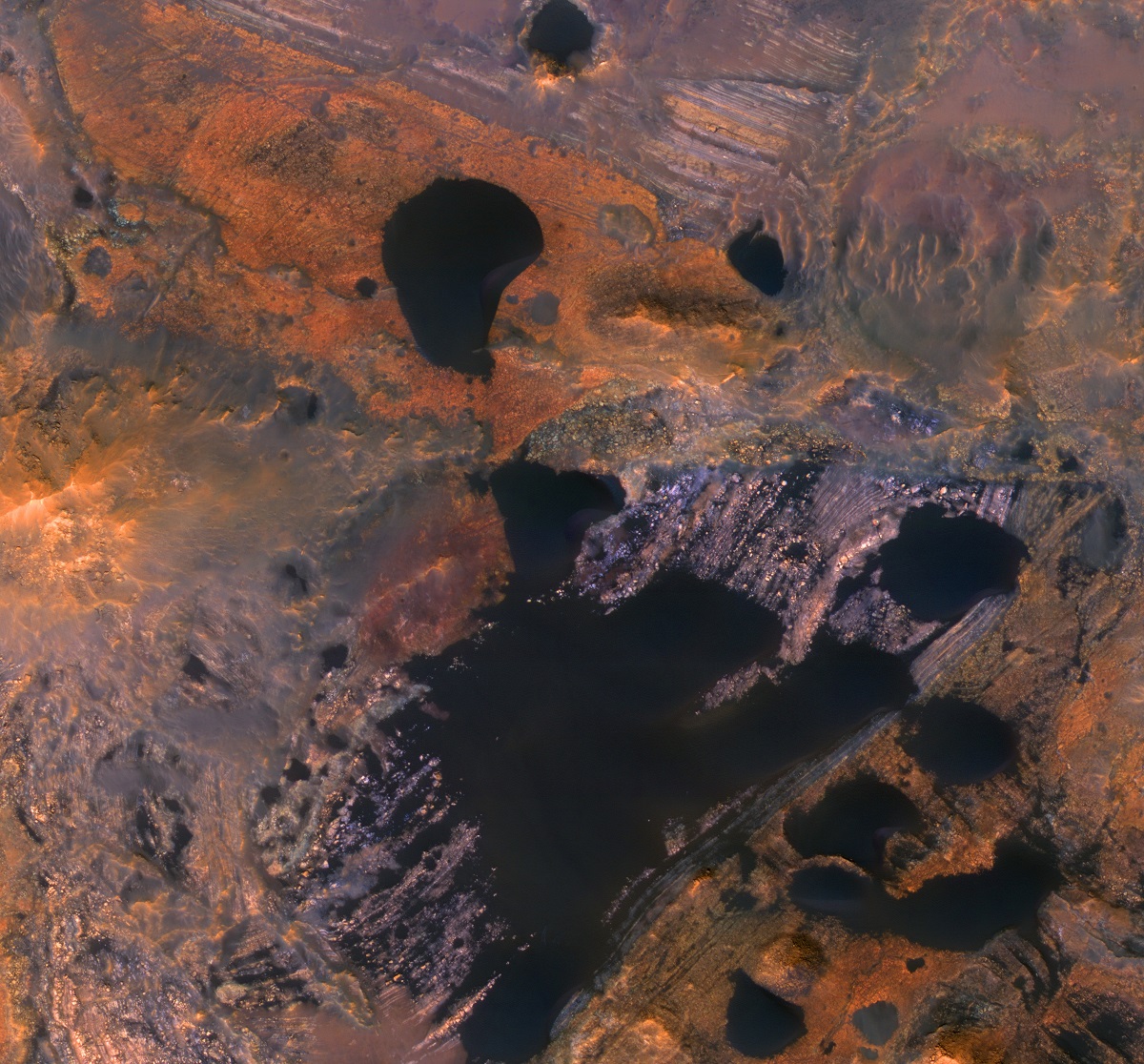 Tilted and Layered Bedrock Blocks in a Large Crater inside Becquerel Crater
Tilted and Layered Bedrock Blocks in a Large Crater inside Becquerel Crater
Geographical Location
Becquerel Crater holds a strategic position in the expansive Arabian Terra region, which forms a considerable part of the Martian highlands in the planet’s northern hemisphere. Specifically, the geographical coordinates of this remarkable geological formation are roughly 22 degrees North latitude and 352 degrees East longitude. The crater has an imposing diameter of about 167 kilometers, situating it among the more sizeable impact craters on Mars. What sets Becquerel Crater apart is its unique context; it is deeply embedded within a diversified landscape saturated with a multitude of other impact craters, expansive valleys, towering mesas, and intriguing geological formations. This creates a complex geomorphological and geological matrix, providing scientists with a multitude of opportunities for study. The region surrounding Becquerel is especially noteworthy due to its ancient geological timeline, being one of Mars’ oldest terrains. Consequently, the crater serves as an unparalleled observatory for delving into the planet’s long-term geological and climatic evolution.
Advertisement
Sample Marscapes
Geological Composition
Becquerel Crater is not just another crater on the Martian landscape; it’s a rich archive teeming with complex geological elements that paint an extensive narrative of Mars’ varied geological past. Advanced spectroscopic analyses, primarily conducted by the Mars Reconnaissance Orbiter (MRO), have highlighted the presence of an intricate mineralogical composition within the crater. These include clays, sulfates, and basalts, among other minerals. Each category of these minerals offers unique insights into the different geological processes that have shaped the Martian surface, from volcanic outpourings to water-induced alterations and sedimentary layering. The floor of the crater is particularly noteworthy, boasting thick and well-defined strata of sedimentary rocks that potentially signify either aeolian (wind-based) or fluvial (water-based) deposition—or perhaps a blend of both. The stratified sedimentary rocks are invaluable as they create a geological diary, recording environmental conditions prevailing at the time of their formation. Contrasting this, the walls of the crater are a spectacle of erosion, showcasing a mélange of rock types that range from conglomerates to multi-layered basalts. These different components of rock and patterns of erosion contribute additional layers of intricacy to the already complex geological tableau of Becquerel Crater.
Significant Discoveries
Ancient River Channels
In the complex geological narrative of Becquerel Crater, perhaps one of the most captivating chapters has been the discovery of ancient river channels. These meandering paths etched into the landscape strongly suggest that liquid water once actively flowed in this region. The presence of these ancient channels stirs tantalizing speculations regarding the Martian environment’s erstwhile ability to sustain life, whether microbial or otherwise.
Diverse Mineralogy
The crater’s diverse mineralogical portfolio further amplifies its importance. The discovery of a variety of minerals, particularly clays and sulfates, serves as strong indicators of past water-based activities. The range of these minerals makes Becquerel Crater an outstanding candidate for examining the watery chapters of Mars’ geological history.
Aeolian Features
In addition to water-based features, Becquerel Crater also showcases evidence of aeolian, or wind-based, processes. Observations have identified dunes, ripples, and wind streaks within the crater, pointing to a history of wind action that has sculpted the crater over time. This adds another level of complexity to the crater’s rich geological and geomorphological record.
Scientific Missions
Mars Reconnaissance Orbiter (MRO)
The MRO’s role in elucidating the mysteries of Becquerel Crater has been nothing short of transformative. Employing high-resolution imaging technology and sophisticated spectroscopic analysis, this mission has played a seminal role in mapping out mineral compositions and scrutinizing the crater’s topographical and geomorphological aspects in unprecedented detail.
Viking Orbiters
These pioneering missions in the late 1970s offered humanity’s first in-depth looks at Becquerel Crater. Although limited by the technology of their era, the Viking Orbiters laid the foundational groundwork for the complex analyses that would follow in subsequent decades.
Future Missions
Given the wealth of scientific information that Becquerel Crater promises to offer and the myriad questions it provokes regarding Mars’ past environments and their potential for hosting life, this crater is often cited as a prime candidate for focused exploration in future missions to the Red Planet.
Geomorphological Features
Becquerel Crater serves as a multifaceted palette of geomorphological wonders. Its central peak, commonly observed in large impact craters, is especially instrumental in offering clues about the subsurface composition of the Martian landscape. Beyond that, the terraced walls of the crater display intricate erosional patterns, likely crafted through a combination of wind-based and water-based processes over eons. Furthermore, the floor of the crater is a treasure trove of diverse features, including but not limited to dune fields, rock outcrops of sedimentary origin, and tantalizing signs of ancient river channels. The intricate assembly of these features turns Becquerel Crater into a rich geomorphological laboratory for scientific investigation, granting us a detailed framework for understanding Mars’ geological evolution over time.
Becquerel Crater serves as a window into Mars’ ancient past. Its diverse geological features and mineral compositions provide valuable clues about the planet’s geological and climatic evolution. With evidence of water-based processes and a complex geological history, Becquerel Crater remains a focal point for scientific investigations aimed at unraveling the mysteries of Mars. The data gathered from this unique crater has the potential to redefine our understanding of the Red Planet and perhaps even the history of water and life beyond Earth.
Check out our 3D Mars Learning Center for more information on Mars and the Becquerel Crater. You can also learn more at: NASA Mars Exploration.
More About Mars
Contact us today to learn more about our 3D services and how we can help you achieve your goals.
